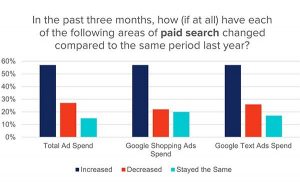
Those in digital marketing know that it is always changing. While it’s true that the last five or six years have severely rocked the boat in terms of search results volatility, this next year promises to provide digital marketers with more stability. Algorithm updates have continued to roll out, albeit less frequently and without the same commotion as their predecessors. Google is ultimately looking to display the most relevant and authoritative sites at the top of search results coupled with the best user experience. This is by no means an easy undertaking, so let’s look at what that entails in the coming year:
1. Relevance: Onsite Optimizations
Specifically I am talking about keyword-level optimization for title tags, meta descriptions, <H1> tags, semantically natural keyword density in content, image coding, navigation/footer optimization & architecture of the website. All of the above are the foundation for your onsite SEO and are the most important factors in getting your site indexed properly. I see this shifting in the coming years from being keyword specific to being driven by topics, ideas, and raw concepts. For now, though, it is safe to say that you need to play by the rules and check each one of those off your laundry list.
2. Authority: Offsite Presence
There was a grand old time (back in 2011) when you didn’t have to have all of the onsite pieces in tip-top shape. You could simply pay cheap prices for thousands of mentions on random sites all labeling you “Best SEO Company,” linking back to your root domain, and you would dominate. After Google penguin cleaned up that mess, SEOs have had to rely less and less on what anchor text (or hyperlinks) say and more on the quality of the sites these links are coming from.
Since Google stopped updating page rank years ago, it is safe to use Moz’s Domain Authority as the universal unit of measurement. This score is greater on sites with a higher number of referring domains from trusted sources. Back in the day if you wanted to rank 20 keywords, you would just make 5% of the hyperlinks pointing back to your site for each keyword—those days are long gone. In 2016, the majority of all your anchor text should be branded/random phrases. These links should display your businesses name and iterations of the website (ie: www & http:// versions). These make your linkscape natural, are great in terms of branding, and will only help your cause in gaining authority. It is very important to get “do follow” links so authority juice gets passed to your site. The reality here is that the process takes a lot of real work, cannot be automated, and requires serious commitment in order to get results.
3. Mobile Friendly
With everyone’s go-to device in the palm of their hand and mobile searches continuing to rise, Google is definitely looking to be at the forefront of providing the best user mobile experience. They did this last year very loudly, announcing “mobilegeddon” on April 21st to help sites with good mobile experience and devaluing sites without it. Afterwards, webmasters noticed a mobile user experience metric on the Google page speed insights tool, and we also noticed “mobile friendly” appearing on search results with mobile responsive sites. Local search is all about mobile now, with click-to-call and three pack maps listings that look great on any device.
4. User Experience and Site Hygiene
Everyone with a site should be continually monitoring search console (formerly known as webmaster tools) to get direct feedback from Google on the user experience and any pending issues on their website. HTML errors, not found errors (404), server errors, short or long meta descriptions…it’s all here. The theme of being unique across the site is extremely important and will only continue to be, thus it is important not to host duplicate content internally or externally. Several tools can crawl your site to help provide this info but search console is a great place to start.
5. Fresh Content
With newer site designs having far less content above the fold in exchange for a sexier image-driven UX, any site that is serious about organic growth needs to have a stream of fresh content in the form of articles or blogs. In fact, the only reason why I’ve seen sites outrank others with better metrics is that their content is updated more frequently, which means that Google definitely has a freshness factor built into its rankings equation. In order for the content to help your ranking, there must be a designated location and strategy in place for the content. This should also include internal linking throughout your site, making the site more connected and robust. We will also see more video content in the coming year, leading me to believe that “time on site” or “dwell time” will be an ongoing area of focus.
6. Social Media Support
As long as there is well-written, useful content backing up your blog posts, leveraging social media to get the word out on your golden nuggets is the important final step to staying on top of 2016’s digital marketing trends. There is so much controversy over whether or not Google looks at indicators like Facebook likes, shares, or Twitter re-tweets that we won’t even go there. However, your main objective in using social media should be getting your content in front of those that can use that information and link to it from their site.
Conclusion:
Google will continue to evolve, and although SEO seems slightly less ambiguous than it has in the past, the amount of work that it takes to manage each aspect will continue to grow more arduous. Fundamental onsite optimization and user experience must be followed up with great content and heavy outreach (relationship building) supplemented with the right social strategy to expand the footprint and keep the organic traffic coming.
Digital & Social Articles on Business 2 Community(100)






